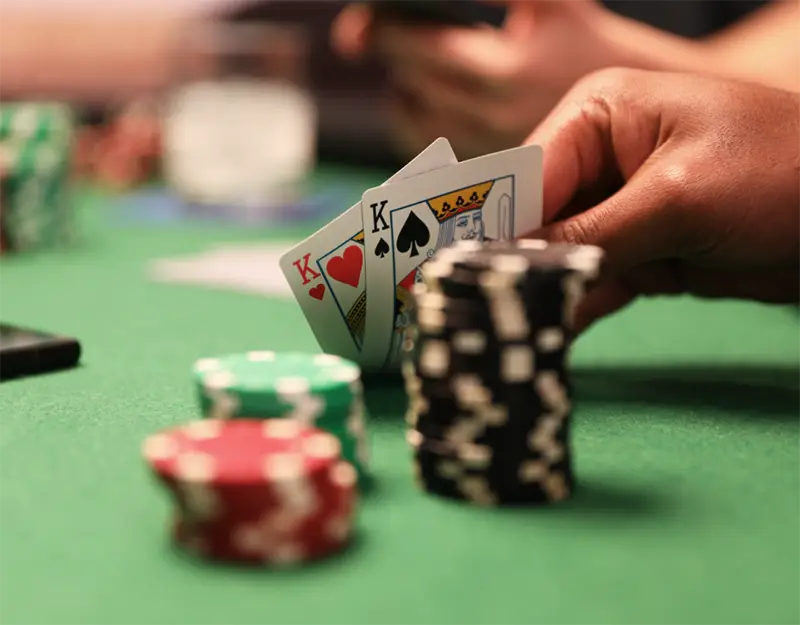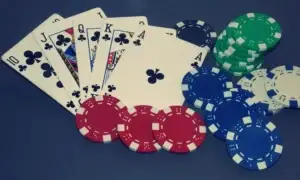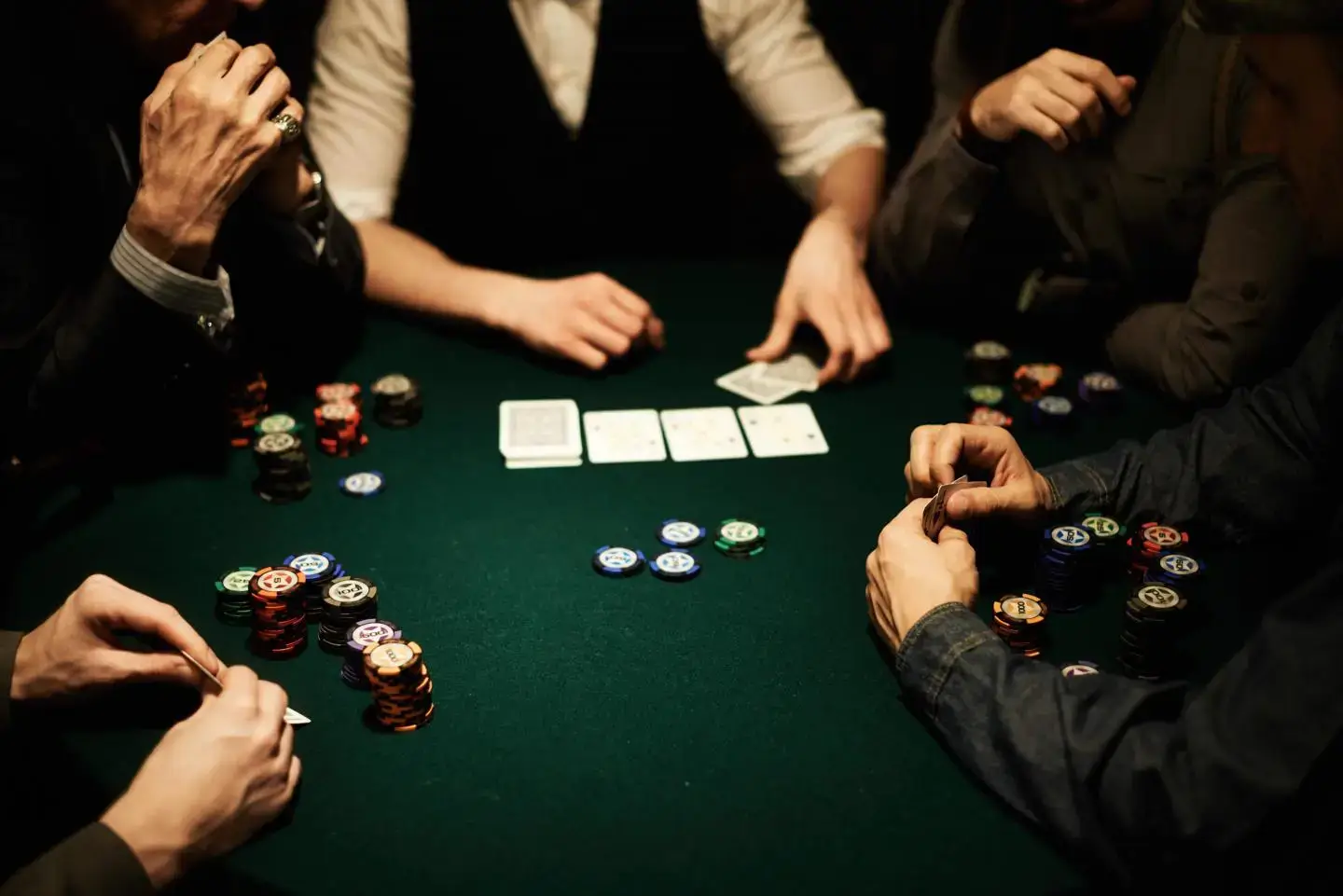In poker, knowledge of combinations is the foundation of success. How well a player understands the hierarchy of card combinations depends on his ability to control the game. What is older in poker: a straight or a flush? This question worries many beginners, and we will give a comprehensive answer to it.
Poker combinations: what is older – a straight or a flush in poker?
In poker, there is a hierarchy of card combinations that determines the winner. From the simplest pair to the elusive royal flush, each combination has its own value. Let’s take a look at how they are formed:

- Pair. Two cards with identical denomination (for example, two sevens). This is the basic combination.
- Two Pairs. The presence of 2 pairs of cards of different values (for example, two eights and two threes).
- Set (Trips). Three cards of the same rank (for example, three queens). This combination can dramatically change the course of the game.
- Street. 5 cards that follow each other in order, regardless of suit (e.g. five, six, seven, eight, nine).
- Flush. 5 cards of the same suit, not necessarily consecutive (e.g. 5 spades).
- Full House. A combination of a set and a pair (e.g., three Jacks and two Fours).
- Kare. 4 of the same (e.g., four kings). A virtually guaranteed win.
- Street Flush. 5 consecutive cards of the same suit. A rare and incredibly powerful combination.
- Royal Flush. The top of the poker combinations are the Tens, Jacks, Ladies, Kings and Aces of the same suit.
Each of these poker combinations has its own level of strength, and understanding this ranking allows you to make the right bets and calculate your opponents’ moves. So which is older: a straight or a flush in poker? The answer is simple: a flush.
Seniority of combinations in poker
Many people wonder why a flush is older than a straight. The answer lies in the mathematical probability and logic of the game. A flush is more difficult to collect, as you need five cards of the same suit, while a straight only requires you to form a sequence, but not necessarily of the same suits. This makes the first combination rarer and therefore stronger. Imagine a situation at a poker table where one player has a straight and another player has a flush. The second player wins because his combination is stronger according to the rules of poker.
Going deeper, seniority is not just a matter of probability. It is an important element of game balance that keeps the game intriguing until the very end. For example, suit-dependent combinations make every decision at the table more risky. Opponents may bluff by pretending to pick a rarer hand. Analysing behaviour, studying betting patterns and keeping track of your opponents’ likely combinations turns simple odds calculation into a real art. Every action at the table becomes part of a strategy where hand strength is just one of many success factors.
Playing strategy with senior and junior combinations in mind
 It is the basis for making good decisions at the poker table. Many beginners underestimate the importance of seniority, making mistakes that can cost them their entire pot. For example, beginners don’t realise that a straight can easily lose to a flush if they don’t take into account the possibility that their opponent may have cards of the same suit. To minimise the risks, you should always pay attention to the possible senior combinations that your opponents may have and adjust your strategy accordingly.
It is the basis for making good decisions at the poker table. Many beginners underestimate the importance of seniority, making mistakes that can cost them their entire pot. For example, beginners don’t realise that a straight can easily lose to a flush if they don’t take into account the possibility that their opponent may have cards of the same suit. To minimise the risks, you should always pay attention to the possible senior combinations that your opponents may have and adjust your strategy accordingly.
Hands in poker and their importance
Choosing the right hands at the dealt stage is the key to success. There are many tactics that determine which cards to keep and which to discard. Here’s a list of the hands that are best to enter the game with:
- A pair of aces (AA): the strongest starting hand in poker.
- King and Queen of the same suit (KQ): A high probability of making a strong combination such as a flush or straight.
- Ace and King of the same suit (AK): An excellent hand for aggressive play.
- Pair of Kings (KK): almost as strong as a pair of aces, but more vulnerable against them.
These hands offer the best chance of winning, but it’s important to remember that even the strongest hand can lose if you don’t consider your opponents’ combinations and follow the right strategy. What is older than a straight or flush in poker – the answer to this question is also important to consider in order to know whether it is worth continuing to play with a particular sequence of cards.
Common beginner mistakes related to the seniority of combinations
Poker beginners often make mistakes related to misunderstanding the seniority of combinations. Here are some common examples:
- Underestimating the flush. As mentioned above, many novice players don’t realise that a flush is older than a straight. They may continue to bet with the straight, confident of their victory, until they see their opponent’s flush.
- Matching Kickers with Identical Pairs. If two players have identical pairs, e.g. two tens, the one with the higher kicker (the highest card of the remaining three) wins. Beginners often forget this rule and assume that the pot is equally divided.
- Misjudging the strength of a full house. A full house consisting of a trio of lower cards and a pair of higher cards is weaker than a full house where the trio is higher. For example, three jacks and two twos are weaker than three kings and two tens.
- Playing with weak straights. A straight that starts with lower cards (e.g. two-three-four-five-six) can be very vulnerable, especially if there are cards on the table that can collect a higher straight.
By avoiding these mistakes and clearly understanding the hierarchy of poker combinations, you will greatly increase your chances of success in the game.

Conclusion
 Understanding whether a straight or flush in poker allows you to avoid mistakes, make more informed bets and win more often. Use this knowledge in practice, learn to analyse your opponents’ play and make the right decisions. There is no room for chance in poker – the one who understands the odds better and knows how to take advantage of them wins.
Understanding whether a straight or flush in poker allows you to avoid mistakes, make more informed bets and win more often. Use this knowledge in practice, learn to analyse your opponents’ play and make the right decisions. There is no room for chance in poker – the one who understands the odds better and knows how to take advantage of them wins.
 en
en  de
de  ar
ar  es
es  hi
hi  fr
fr  nl
nl  it
it  pt
pt  el
el 









